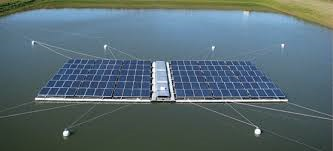
Breaking News
 BREAKING: ACTIVE SHOOTER at Brown University - Two People Dead - 8 Critically Injured
BREAKING: ACTIVE SHOOTER at Brown University - Two People Dead - 8 Critically Injured
 Argentina Moves to Let Banks Offer Bitcoin and Crypto Services
Argentina Moves to Let Banks Offer Bitcoin and Crypto Services
 We're One Storm Away From Disaster
We're One Storm Away From Disaster
 Think a Dairy Cow Will Tie You Down? Here's the Truth.
Think a Dairy Cow Will Tie You Down? Here's the Truth.
Top Tech News
 This tiny dev board is packed with features for ambitious makers
This tiny dev board is packed with features for ambitious makers
 Scientists Discover Gel to Regrow Tooth Enamel
Scientists Discover Gel to Regrow Tooth Enamel
 Vitamin C and Dandelion Root Killing Cancer Cells -- as Former CDC Director Calls for COVID-19...
Vitamin C and Dandelion Root Killing Cancer Cells -- as Former CDC Director Calls for COVID-19...
 Galactic Brain: US firm plans space-based data centers, power grid to challenge China
Galactic Brain: US firm plans space-based data centers, power grid to challenge China
 A microbial cleanup for glyphosate just earned a patent. Here's why that matters
A microbial cleanup for glyphosate just earned a patent. Here's why that matters
 Japan Breaks Internet Speed Record with 5 Million Times Faster Data Transfer
Japan Breaks Internet Speed Record with 5 Million Times Faster Data Transfer
 Advanced Propulsion Resources Part 1 of 2
Advanced Propulsion Resources Part 1 of 2
 PulsarFusion a forward-thinking UK aerospace company, is pushing the boundaries of space travel...
PulsarFusion a forward-thinking UK aerospace company, is pushing the boundaries of space travel...
 Dinky little laser box throws big-screen entertainment from inches away
Dinky little laser box throws big-screen entertainment from inches away
 'World's first' sodium-ion flashlight shines bright even at -40 ºF
'World's first' sodium-ion flashlight shines bright even at -40 ºF
Floating Solar Panels May Be Coming To A Reservoir Near You

To improve on solar energy, new power plants are taking to the water. The idea is still pretty new, but rafts of floating solar panels are up and running in the United States and Australia, with more planned, reports The New York Times.
Floating solar panels are more efficient than land-based arrays (thanks to the fact that they have water on hand to cool them down). "Floatovoltaics" are also appealing because it's cheaper to float panels over water than to rent or buy land. They can be constructed more quickly than land-based installations, and more easily tucked out of sight. Floating arrays also tamp down on algae blooms and keep water from evaporating.
The world's largest installation will feature more than 50,000 panels on the Yamakura Dam Reservoir in Japan's Chiba Prefecture.



